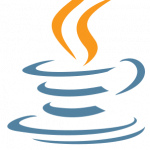 Oracle just released their first quarterly Critical Patch Update Advisory for 2019.
Oracle just released their first quarterly Critical Patch Update Advisory for 2019.
These advisories cover a lot of Oracle software, most of which is likely of very little interest for ordinary users. But buried in each of these reports you’ll usually find a reference to a new version of Java.
It’s increasingly unlikely that you have a shared Java installation on your Windows computer. You may run Java applications, such as Minecraft and some network and Internet tools, but these often include their own, separate installs of Java now.
The easiest way to see whether you have a shared install of Java on your Windows 7 or 8.x computer is to go to the Control Panel and look for a Java entry. If you see one, open it up and go to the Update tab, then click the Update Now button. If there’s an update available, you’ll be able to install it from there.
You can also visit the Verify Java Version page, but unless you’re using Internet Explorer, it won’t be able to tell you if you’re even running Java. If you’re on Windows 10, that’s also the easiest way to check your version.
Java 8 Update 201 addresses five security vulnerabilities in earlier versions. The details are listed in the quarterly advisory.
 boot13
boot13